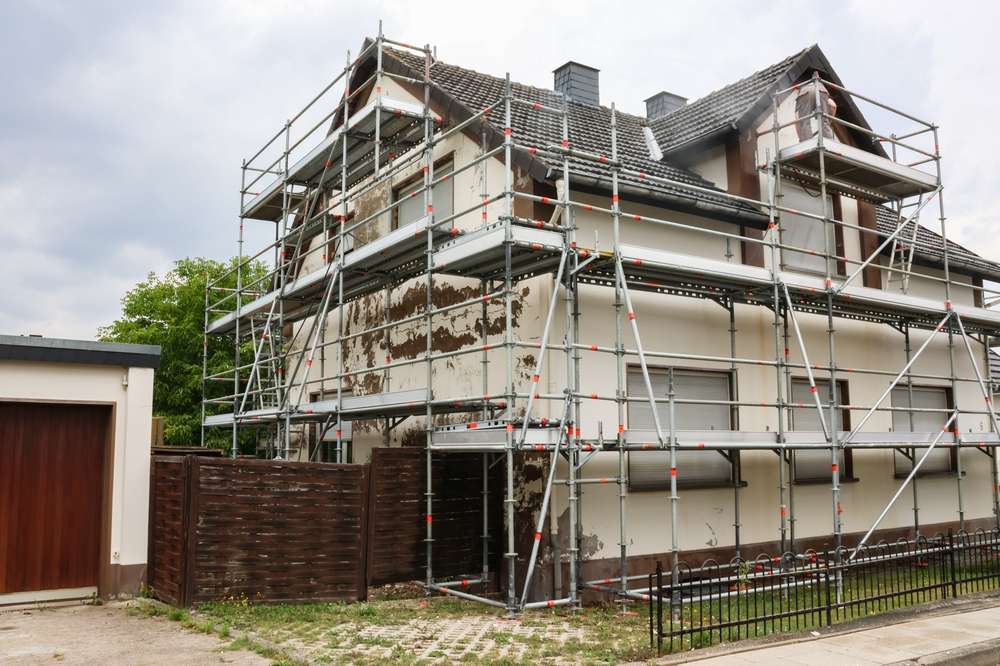Breathing New Life Into Abandoned Houses: Discovering Hidden Potential
Abandoned houses stand as silent witnesses to bygone eras, each with its own story to tell through architectural details, unique features, and historical significance. These forgotten structures, once vibrant homes filled with life, now present extraordinary opportunities for those with vision and determination. Beyond their dilapidated exteriors often lie original craftsmanship, architectural elements, and spatial arrangements that modern buildings rarely match. The growing interest in restoring these neglected properties comes from both preservation enthusiasts and practical homeowners seeking character-filled spaces with good bones and untapped potential.

Exploring the Architectural Charm Hidden Within Abandoned Houses
Abandoned houses often contain architectural treasures that modern construction simply cannot replicate. Original hardwood floors, hand-carved banisters, decorative moldings, and built-in cabinetry showcase craftsmanship from eras when attention to detail was paramount. Victorian-era homes might reveal ornate fireplaces and intricate ceiling medallions, while mid-century properties might feature distinctive wood paneling or space-age design elements popular in their time.
Even more fascinating are the “hidden” features that emerge during careful inspection—pocket doors concealed within walls, servant staircases leading to forgotten rooms, or original windows obscured by later renovations. These architectural elements tell stories about how previous generations lived and provide invaluable historical context. Preserving these features not only maintains the architectural integrity of the building but often increases property value by highlighting its unique historical character.
Creative Ideas for Restoring and Repurposing Forgotten Homes
Breathing new life into abandoned properties requires both respect for original elements and creative vision for modern functionality. Open-concept adaptations can transform compartmentalized Victorian layouts while preserving period details like archways and moldings. Former servant quarters might become home offices, while attics convert beautifully into master suites with exposed beams and character.
Repurposing extends beyond residential use—abandoned homes frequently find new purpose as bed-and-breakfasts, art galleries, community centers, or mixed-use spaces. A Victorian home might become a charming restaurant with private dining rooms in former bedrooms, while a mid-century ranch could transform into a boutique featuring display areas that highlight original architectural elements.
Sustainability represents another creative approach, incorporating salvaged materials from unsalvageable sections into new construction. Original floorboards might become statement walls, while antique hardware finds new purpose on modern cabinetry. This approach reduces waste while creating a seamless blend between old and new elements.
Key Considerations for Assessing Structural Integrity and Renovation Possibilities
Before embarking on any restoration journey, thoroughly evaluating an abandoned property’s condition is essential. Foundation issues, water damage, and structural deterioration require professional inspection. Load-bearing walls, roof systems, and foundation footings demand particular attention, as these structural elements determine whether restoration is feasible or cost-prohibitive.
Infrastructure systems present another critical consideration. Original electrical wiring rarely meets modern safety codes and typically requires complete replacement. Plumbing systems often suffer from corrosion, leaks, or outdated materials like lead pipes that pose health concerns. HVAC considerations include whether to restore original systems like radiators or install entirely new climate control.
Environmental hazards represent significant challenges in older abandoned homes. Asbestos might be present in insulation, flooring, or textured ceilings. Lead paint commonly appears in properties built before 1978, while mold infestations result from water intrusion. Professional testing and remediation for these hazards must be factored into renovation budgets and timelines.
Understanding Local Regulations and Preservation Guidelines
Navigating the regulatory landscape presents one of the most challenging aspects of abandoned home restoration. Zoning regulations may restrict certain uses or renovations, particularly if the property’s designation has changed since its construction. Building codes often include special provisions for historic properties, sometimes allowing alternative compliance paths that balance safety requirements with preservation.
Properties in designated historic districts face additional oversight through preservation committees that review exterior changes for historical appropriateness. These committees typically provide guidelines regarding acceptable materials, colors, and design elements. While potentially restrictive, these regulations help maintain neighborhood character and often increase property values through consistency.
Permits and inspections represent another regulatory layer, with most substantial renovations requiring multiple approvals throughout the process. Working with inspectors familiar with historic properties can prove invaluable, as they often understand the balance between code compliance and preservation. Many municipalities also offer tax incentives, grants, or low-interest loans for qualifying historic restoration projects, making regulatory compliance financially advantageous.
Inspiring Transformation Stories of Forgotten Houses
The most compelling argument for abandoned house restoration comes from success stories where vision and perseverance transformed seemingly hopeless properties. In Lancashire, a Victorian textile mill owner’s mansion sat abandoned for decades until a preservation-minded couple discovered its potential beneath boarded windows and collapsing ceilings. Their five-year restoration revealed original marble fireplaces, ornate plasterwork, and a magnificent central staircase, creating a showcase home that later won heritage awards.
Community-based restoration efforts demonstrate collective impact, like the Yorkshire village that purchased an abandoned 18th-century manor house slated for demolition. Through volunteer labor and fundraising, they transformed it into a thriving community center housing a library, cafe, and meeting spaces while preserving architectural elements that had defined their village skyline for centuries.
Even modest projects inspire—like the London terrace house that stood empty for thirty years until a young architect recognized its potential. Despite severe water damage, she preserved original Victorian tilework, restored the facade to period specifications, and incorporated sustainable systems throughout. The result blends historical character with modern efficiency, demonstrating how preservation and innovation can coexist beautifully.
Conclusion
Abandoned houses represent both architectural heritage and opportunity. Their original features tell stories of craftsmanship and history, while their structures offer sustainable alternatives to new construction. Though the restoration process involves significant assessment, planning, and regulatory navigation, the results—whether for private homes or community spaces—preserve important architectural heritage while creating functional, character-filled environments for contemporary life. The transformation of these forgotten properties demonstrates that with vision and respect for their historical significance, abandoned houses can once again become vibrant spaces that honor the past while serving the present.




